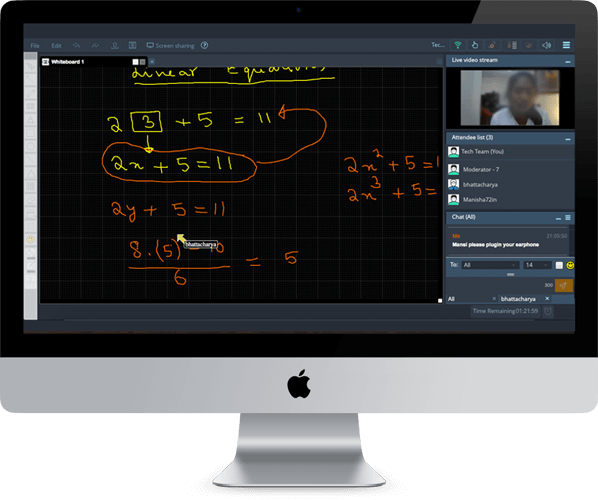JEE Main
- Home
- Exams
- JEE Main
Reach Us 24x7: +91 - 8800 1234 92
CIWG
CIWG Scheme - Children of Indian Workers in Gulf Countries
What is CIWG Scheme?
CIWG stands for Children of Indian Workers in Gulf Countries. CIWG is a scheme generated by the Ministry of India for the children of Indian expatriates in Gulf countries looking for admissions at the premier Indian Institutes through the DASA scheme.
According to the CIWG scheme, there will be 1/3rd reservation of seats of DASA for the Children of Indian workers in the Gulf countries (CIWG). However, any vacant seats out of the 1/3rd category of CIWG shall be reverted to the 2/3rd quota seats meant for other different categories of DASA. The 1/3 reserved category of CIWG will be reverted to the 2/3rd quota if not filled within the spot round.
CIWG Details You Need To Know:
|
S.No |
Table of Content |
|
1 |
|
|
2 |
|
|
3 |
How To Apply for CIWG Scheme | Application Form Filing | Documents |
|
4 |
|
|
5 |
|
|
6 |
|
|
7 |
|
|
8 |
|
|
9 |
|
|
10 |
|
|
11 |
|
|
12 |
|
|
13 |
|
|
14 |
|
|
15 |
|
|
16 |
Countries Eligible Under CIWG Scheme:
- Bahrain
- Iran
- Iraq
- Kuwait
- Oman
- Qatar
- Saudi Arabia
- United Arab Emirates (UAE)
Essential Documents Required During The Admission Process Under DASA/CIWG 2022
- Copy of the Passport of the Parent
- Visa of the Parent
- Work Permit of the Parent and
- Company/Organization Proof of the Parent to show that you’re working in Gulf
CIWG Scheme for students in Saudi Arabia, Oman, Bahrain, Kuwait, Dubai, Abu Dhabi etc. For details see our detail video below:
CIWG Changes 2022
Useful JEE Main Links You Should Not Miss:
JEE Details You Should Not Miss:
JEE Coaching Centers:
JEE Main & Advance Preparation Resources:
| JEE Physics | JEE Chemistry | JEE Mathematics |
|---|---|---|
| Mathematics In Physics | Atom & Molecules | Relations |
| Unit, Dimension & Measurement | Atomic Structure | Sets Theory |
| Motion In One Dimension | Chemical Bonding | Continuity |
| Circular Motion | Solutions | Differentiability |
| Projectile Motion | Solid State | Functions |
| Newtons Law of Motion | Gaseous State | Limits |
| Friction | Nuclear Chemistry | Differentiation |
| Work, Energy & Power | Chemical Equilibrium | Application of Derivative |
| Rotational Motion | Thermodynamics & Thermochemistry | Difinite Integrals |
| Gravitation | Chemical Kinetics | Indefinite Integrals |
| Properties of Bulk Matter | Redox Reaction | Area Under The Curve |
| Surface Tension | Electrochemistry |
function isNumberFF(evt) {
evt = (evt) ? evt : window.event;
var charCode = (evt.which) ? evt.which : evt.keyCode;
if (charCode > 31 && (charCode < 48 || charCode > 57)) {
alert("Please enter only Numbers.");
return false;
}
return true;
}
function fovalidateForm() {
var name = /^[a-zA-Z\s]+$/;
if (!(document.eformFF.name.value)) {
alert('Please Enter Your Name');
document.eformFF.name.focus();
return false;
}
var phoneNo = document.getElementById('contactff');
if (phoneNo.value == "" || phoneNo.value == null || phoneNo.value == "9999999999" || phoneNo.value == "8888888888" || phoneNo.value == "7777777777" || phoneNo.value == "6666666666" || phoneNo.value == "5555555555" || phoneNo.value == "4444444444" || phoneNo.value == "3333333333" || phoneNo.value == "2222222222" || phoneNo.value == "1111111111") {
alert("Please enter correct your Mobile No.");
document.eformFF.contact.focus();
return false;
}
if (phoneNo.value.length < 10) {
alert("Mobile No. is not valid.");
document.eformFF.contact.focus();
return false;
}
var emid = /^[a-zA-Z0-9._-]+@[a-zA-Z0-9.-]+\.[a-zA-Z]{2,4}$/;
if (!(emid.test(document.eformFF.email.value))) {
alert("Please Enter Correct Mail Id (Like :[email protected])");
document.eformFF.email.focus();
return false;
}
if (!(document.eformFF.class.value)) {
alert('Please Select Class');
document.eformFF.class.focus();
return false;
}
return (true);
}

Download IE Irodov Solutions |




